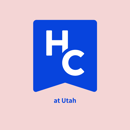Over the weekend, thousands of people took to the internet in anger over what appeared to be an update to YouTube’s “restricted mode” that resulted in the blocking of almost all LGBTQ content when enabled. The optional mode was designed to filter “sensitive” or “objectionable” content, presumably useful for parents wanting to monitor their children’s internet usage. At least, this is what YouTube stated in its response to the outcry. However, as many pointed out, painting LGBTQ content as mature is inherently offensive and harmful, especially considering the struggles the LGBTQ community has gone through to gain even a modicum of social acceptance.
Even more frustratingly, YouTube seemed to see no specific bounds with its censorship. Rather than simply targeting videos that may have discussed more mature topics, which could have been more understandable, the filter seemed to remove all videos that even mentioned the words “gay”, “bisexual”, “trans”, and so on. Popular YouTube personalities such as Shane Dawson, Rowan Ellis, and Tyler Oakley all pointed out that their coming out videos, aimed at younger audiences, were blocked as well. This, of course, poses a huge problem – kids who may be questioning their sexuality may no longer be able to experience the community of support they so desperately need. Some, noticing how strict the regulations appeared to be, tested the system by posting random videos with the word “gay” in the title or included a gay flag in an otherwise unrelated video. These were also blocked.
YouTube has caught wind of the controversy, and issued a response that, while appreciated, leaves some to be desired. In their statement, they explain that the system is new, and needs to be debugged so that G-rated videos that simply mention or discuss sexuality are still available in restricted mode. Certain media, such as music videos by the girl group Tegan and Sara, have been manually edited and unblocked, which is the first step in teaching the system how to more properly flag and sort videos. In the end, they insisted that “[t]here’s nothing more important to us than being a platform where anyone can belong,” which is certainly an ideal focus.
Despite their apology, many are still upset that this issue even occurred to begin with. Why exactly was the software coded to filter out LGBTQ topics in the first place? And perhaps more broadly, why does our society still categorize non-heterosexual, non-cisgender relationships as edgy or inappropriate? Hopefully, YouTube will work quickly to fully resolve the issue, and understand the devastating effects censorship of positive role models for LGBTQ citizens can have on vulnerable populations.

